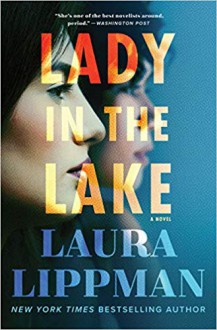
Shame on William Morrow and their jacket designer.
Lippman's story opens with the words of a very pretty young working-class African-American woman and mother of two, Cleo Sherman, addressing Madeline Schwartz. She's saying that no one except her mother missed her when she disappeared, "no one cared." She's telling us that Black Lives Matter and no one was going to look for her until Schwartz, a very pretty still youngish middle-class white woman and mother of one, made the disappearance into a big deal. Cleo's a realist who's endured racism her entire life.
So the cover designer took that symbolic second place in which Cleo lives and made it literal: the pretty white woman in front, clear enough, and the probably pretty woman of perhaps some color, perhaps just in shadow or a muted reflection, but sufficiently disguised that no potential white reader of Lippman need be put off.
It's possible that no one ever explicitly said "if you put a Black face on the cover, make it hard to tell." Publishers bemoan the lack of diversity on the grounds of giving the book-buying public what it wants, to which end any broad-appeal book jackets keep lead characters of color off the cover, or hide them in shadows, or use white or passes-for-white models. Only the books specifically marketed to a Black audience are overt. It's exactly the same bullshit cycle that segregates books marketed to everyone as gender neutral or overtly masculine, while slapping pink and ball gowns on anything that isn't expected to have cross-over appeal. Legally enforced segregation may be dead, but more kids now attend racially segregated schools than before integration, now imposed by school districting.
White readers have to keep demanding more diverse voices and more diverse characters and more diverse covers, because publishers will only change if they are shamed into it. All the minority voices raised in protest won't sway them, sad to say. It's just so easy to carry on passively in systems of institutional oppression and ignore the problem.
Lippman's novel addresses racism head on. Shame on William Morrow for undercutting her. I am taking a knee, at, I acknowledge, no cost at all to myself. Black Lives Matter. Keep saying it until the US acts like it's true.
Reading progress update: I've read 121 out of 352 pages.

 Log in with Facebook
Log in with Facebook 









